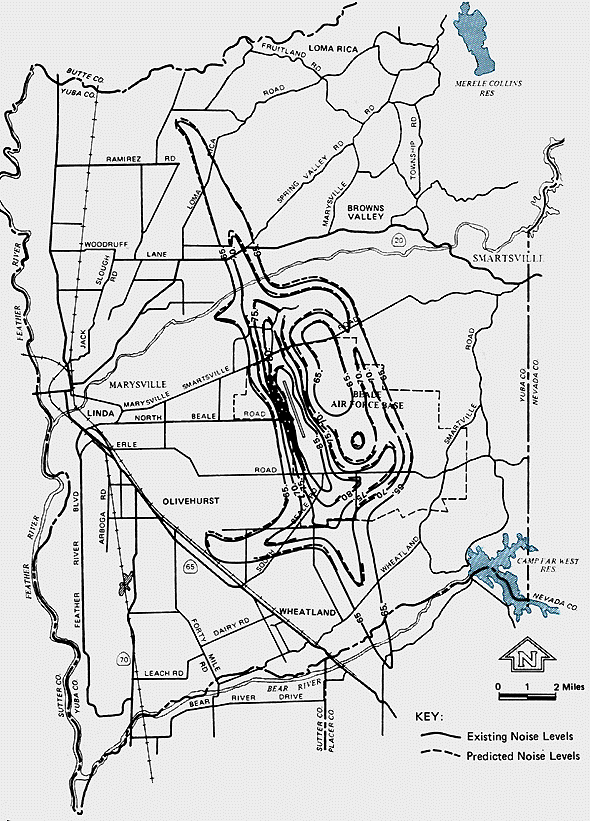


Noise contours (Ldn) for operations at Beale Air Force
Base,
California.

What are the major environmental impacts and mitigation measures related to Air Force flying operations?

Both site-specific and generic studies of Air Force flying operations have revealed that the public response to noise from the biological, psychological, physical and cultural perspectives is a principal environmental consideration.
Safety risk associated with potential aircraft crashes in flight paths around the air bases is also an important consideration. Potential hazards must be mitigated by providing sufficient buffers for both noise and flight safety purposes. These factors are integral to the establishment of land use priorities in the vicinity of air bases, i.e., Air Installation Compatible Use Zones and routinely-used flight paths called Military Operations Areas.
Additionally, flight support operations require the storing of extensive amounts of aircraft fuel, usually in underground storage tanks. They also typically involve the use of a variety of other hazardous substances, which must be stored then disposed of eventually. These issues become extremely important for the assessment of potential air and water contamination, the Installation Restoration Program, and for future land use when the air base is deactivated.

U.S. Department of the Air Force. 1990. Final environmental impact statement for realignment of Beale Air Force Base. Headquarters, Strategic Air Command, Offutt Air Force Base, Neb.
U.S. Department of the Air Force. 1990. Final environmental impact statement for the closure of Mather Air Force Base. Headquarters, Air Training Command, Randolph Air Force Base, Tex.
Integrated Assessment Briefs. 1995. ORNL/M-4227. Oak Ridge National Laboratory, Oak Ridge, TN.